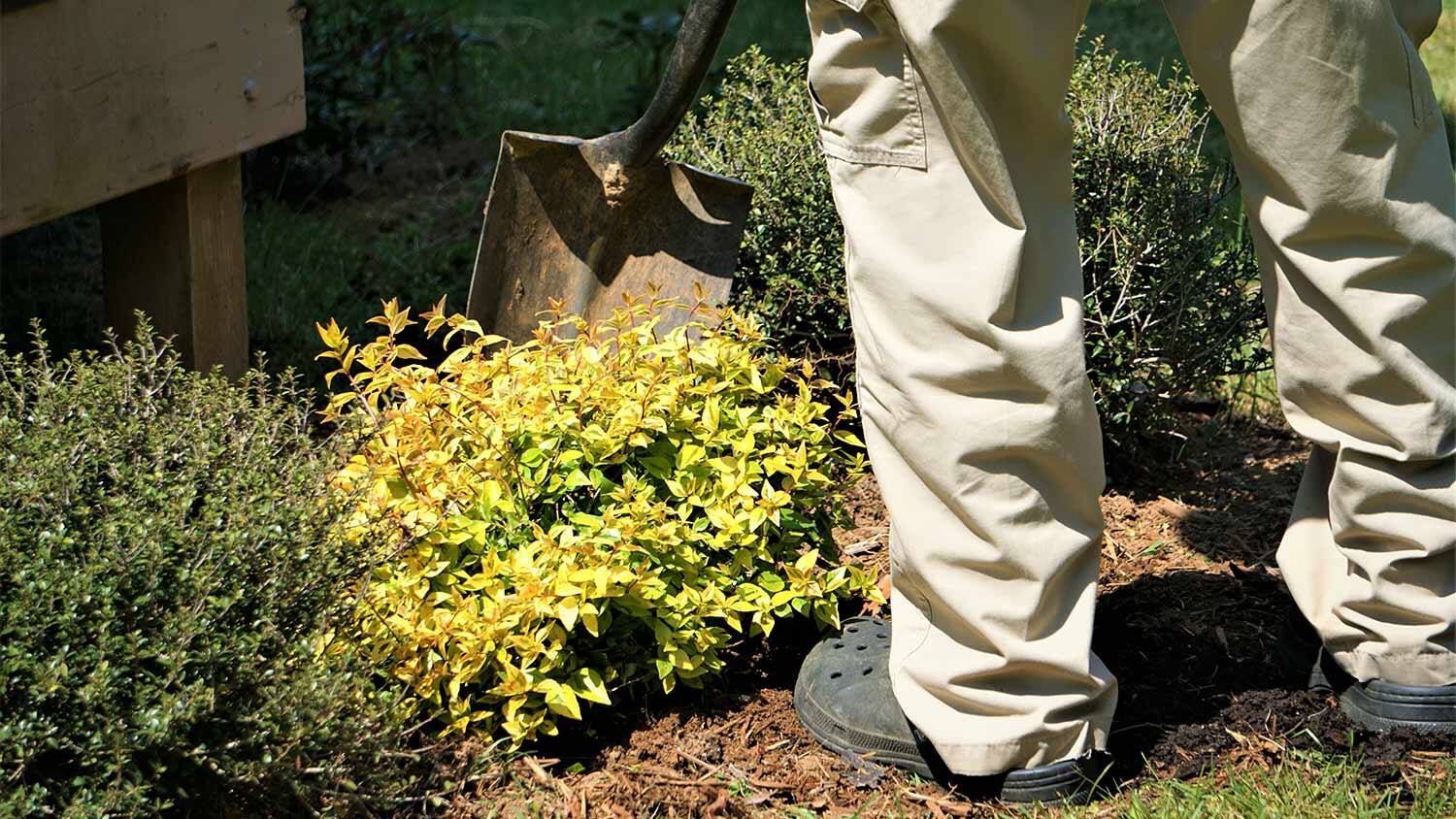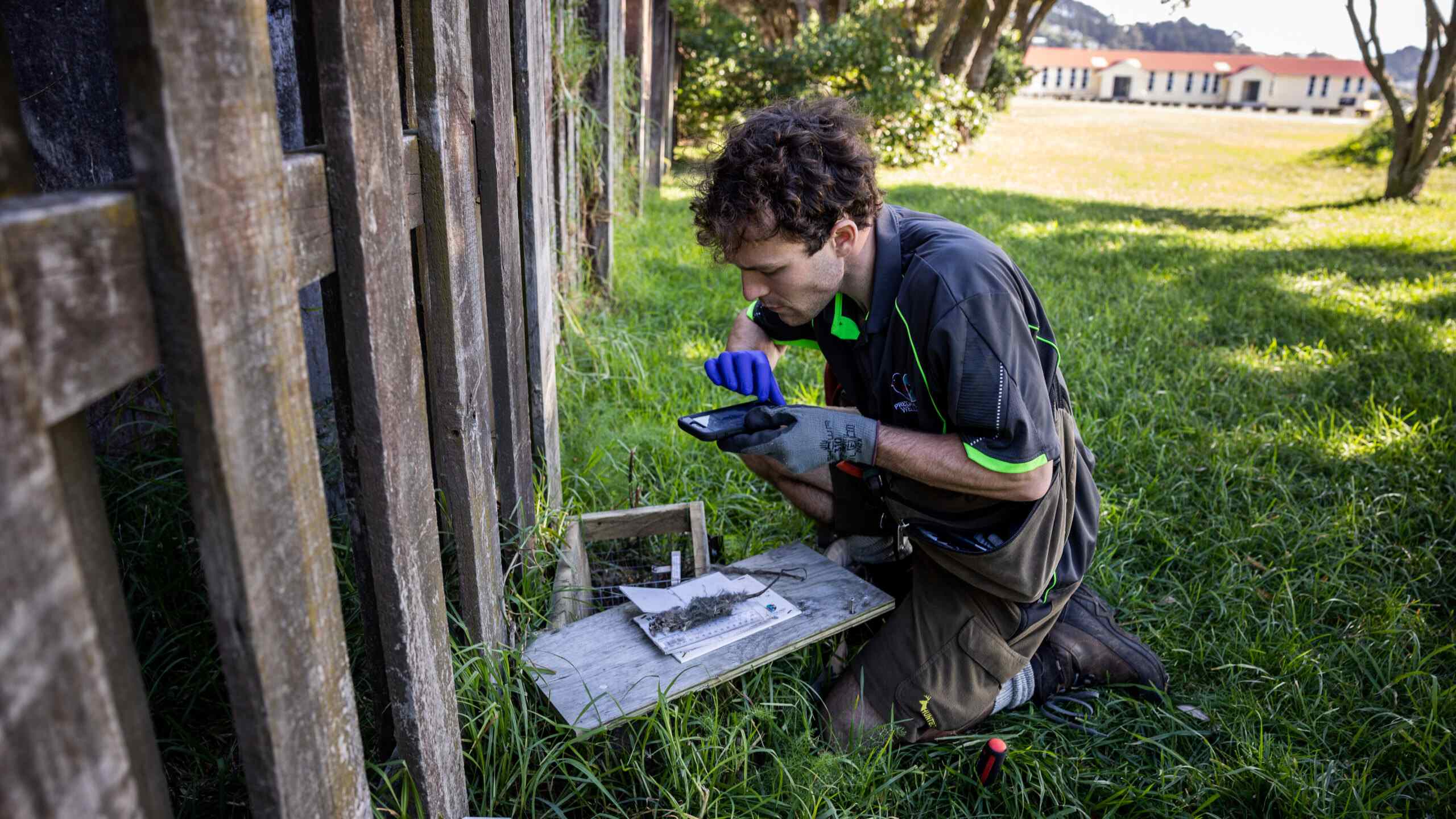Home>Gardening Tips and Tricks>Problem Solving>How To Get Rid Of Root Rot In Hydroponics


Problem Solving
How To Get Rid Of Root Rot In Hydroponics
Modified: January 22, 2024
Learn effective ways to solve the common problem of root rot in hydroponics. Discover practical tips and techniques to eliminate root rot for healthier plant growth.
(Many of the links in this article redirect to a specific reviewed product. Your purchase of these products through affiliate links helps to generate commission for Chicagolandgardening.com, at no extra cost. Learn more)
Table of Contents
Introduction
Welcome to the world of hydroponics, where you can grow plants without the use of soil. This innovative method of cultivation has gained popularity due to its numerous advantages, including efficient use of water, space, and nutrients. However, just like traditional gardening, hydroponics is not immune to certain challenges, and one of the most common problems that hydroponic growers face is root rot.
Root rot is a fungal disease that affects the roots of plants, leading to their decay and ultimately hindering their growth. It can be a frustrating issue to deal with, but with proper knowledge and preventative measures, you can keep your hydroponic system healthy and thriving.
In this comprehensive guide, we will explore the causes, symptoms, prevention, and treatment options for root rot in hydroponics. Whether you are a beginner or experienced hydroponic gardener, understanding how to combat root rot is crucial to maintaining the productivity and longevity of your plants.
So, let’s dive into the world of hydroponics and discover how to effectively get rid of root rot and ensure the success of your hydroponic garden.
Understanding Root Rot
Root rot is a plant disease caused by various species of fungi that thrive in wet and poorly drained conditions. These fungi attack the roots of plants, leading to their decay and eventual death. In hydroponics, where plants are grown in a soil-less medium, root rot can be a common problem if the proper precautions are not taken.
The fungus responsible for root rot thrives in warm and humid environments, making hydroponic systems an ideal breeding ground for its growth. The stagnant water and high levels of moisture in the system provide the perfect conditions for the fungi to flourish.
When the fungi infect the roots, they break down the tissues, causing them to become slimy, discolored, and mushy. This, in turn, disrupts the plants’ ability to absorb water and nutrients, leading to stunted growth, wilting, and, sometimes, death.
It is important to note that not all hydroponic systems are prone to root rot. Systems that utilize an inert medium, such as coco coir or clay pellets, are less susceptible to root rot compared to systems that use organic media, like Rockwool or peat-based mixes. However, regardless of the medium, it is essential to understand the causes and symptoms of root rot to effectively prevent and treat the disease.
By gaining a deeper understanding of root rot, you can make informed decisions and implement strategies to protect your plants from this harmful condition. In the next sections, we will discuss the common causes of root rot, identify the symptoms to watch out for, and explore preventative measures and treatment options to combat this fungal disease.
Causes of Root Rot in Hydroponics
Root rot in hydroponics can be attributed to several factors, all of which involve the presence of excess moisture and poor drainage. Understanding these causes is crucial in order to prevent the occurrence of root rot and maintain a healthy hydroponic system.
1. Overwatering: One of the primary causes of root rot is overwatering. When plants are constantly saturated with water, their roots are deprived of oxygen, creating an anaerobic environment that encourages the growth of fungi. It is essential to maintain a proper watering schedule and ensure that the hydroponic system has proper drainage to prevent water from accumulating.
2. Poorly Designed Systems: Inadequate system design can contribute to the development of root rot. If the system lacks proper drainage or if there are areas where water can stagnate, root rot may occur. Ensuring that your hydroponic system is well-designed and provides ample drainage is key to preventing root rot.
3. Contaminated Water: Water contaminated with pathogens can introduce fungal spores into the hydroponic system, increasing the risk of root rot. It is crucial to use clean, filtered water to minimize the chances of contamination. Regularly monitoring the quality of the water and ensuring it is free from harmful microorganisms can help prevent root rot from occurring.
4. Poor Nutrient Management: Imbalanced nutrient solutions can weaken the plants’ immune systems, making them more susceptible to root rot. It is important to provide the correct balance of nutrients, ensuring that they are readily available to the plants without creating an excess. Overfeeding or providing inadequate nourishment can stress the plants and make them more vulnerable to root rot.
5. Infected Growing Medium: If the growing medium used in the hydroponic system is contaminated with fungal spores or pathogens, it can introduce the risk of root rot. It is crucial to use clean and sterile growing media to minimize the chances of introducing harmful microorganisms into the system.
By understanding the causes of root rot in hydroponics, you can take proactive steps to prevent its occurrence. In the next section, we will discuss the common symptoms of root rot, allowing you to identify and address the problem at the earliest stages.
Symptoms of Root Rot
Identifying the symptoms of root rot in your hydroponic system is crucial for early detection and effective treatment. By being aware of these signs, you can take immediate action and prevent further damage to your plants.
Here are some common symptoms to look out for:
- Wilting: Plants affected by root rot often exhibit wilting, even when they are adequately watered. This is because the decayed roots are unable to absorb sufficient water and nutrients, causing the plant to droop and appear weak.
- Discolored Roots: Healthy roots are usually white and firm. However, root rot causes the roots to turn brown or black, giving them a slimy and mushy texture. This decayed appearance is a clear indication of root rot.
- Stunted Growth: Root rot inhibits the proper absorption of nutrients, which can result in slowed or stunted plant growth. If your plants seem to be lagging in development and are smaller than expected, it could be a sign of root rot.
- Roots Pulling Away: In advanced stages of root rot, the roots may start to detach from the plant’s base. This happens due to the decayed roots losing their grip on the growing medium. If you notice roots pulling away from the plant, it is a definite sign of root rot.
- Unpleasant Odor: Root rot can cause a foul smell, often described as an earthy or rotting odor. If you detect an unpleasant smell coming from your hydroponic system, it is likely a result of the fungal activity associated with root rot.
It is important to note that these symptoms can vary depending on the severity of the root rot and the specific plant species. Regularly inspecting your plants’ roots and observing any abnormalities will help you catch root rot in its early stages. By addressing the issue promptly, you can increase the chances of successful treatment and reduce the risk of spreading the disease to other plants in your system.
Now that we have discussed the symptoms of root rot, we can move on to exploring preventative measures to keep your hydroponic system and plants healthy.
Prevention of Root Rot in Hydroponics
Preventing root rot in your hydroponic system is key to maintaining the health and productivity of your plants. By implementing the following preventative measures, you can significantly reduce the risk of root rot and ensure the long-term success of your hydroponic garden.
- Maintain proper drainage: Ensuring that your hydroponic system has effective drainage is essential in preventing water from stagnating. Use well-designed systems with proper channels and outlets to allow excess water to flow out of the system, preventing the roots from becoming waterlogged.
- Water in moderation: Overwatering is a common cause of root rot. Establish a consistent watering schedule based on the needs of your plants and the type of hydroponic system you are using. Avoid excessive water accumulation by monitoring the moisture levels in the growing medium.
- Use a sterile growing medium: Start with a clean and sterile growing medium to minimize the risk of introducing fungal spores or pathogens into your hydroponic system. Avoid using soil or other organic media that may contain microbes that can cause root rot.
- Monitor and maintain proper pH levels: Regularly check and adjust the pH levels of your nutrient solution to ensure that it remains within the optimal range for your plants. Fluctuations in pH can stress the plants and make them more susceptible to diseases like root rot.
- Choose disease-resistant plant varieties: Some plant varieties naturally have increased resistance to root rot. When planning your hydroponic garden, select varieties that are known for their resilience against fungal diseases.
- Proper sanitation: Practice good hygiene and cleanliness in your hydroponic system. Remove any decaying or dead plant matter, as they can promote the growth of fungi and bacteria. Ensure that your equipment and tools are properly cleaned and sanitized to avoid contamination.
- Monitor nutrient levels: Maintaining a well-balanced nutrient solution is crucial in preventing root rot. Regularly monitor the nutrient levels in your system and adjust accordingly to provide your plants with the proper nutrients they need to thrive.
By implementing these preventative measures, you can create a healthy and resilient hydroponic system that is less susceptible to root rot. Being proactive in maintaining optimal conditions for your plants will help ensure their overall health and productivity.
However, even with preventative measures in place, root rot can sometimes still occur. In the next section, we will explore effective treatment options to combat root rot and save your plants.
Effective Treatment Options for Root Rot
If you notice the symptoms of root rot in your hydroponic system, it is crucial to take immediate action to prevent further damage and restore the health of your plants. While prevention is always the best approach, there are several treatment options available to effectively combat root rot.
Here are some effective treatment options to consider:
1. Remove affected plants: As soon as you spot signs of root rot, remove the affected plants from the hydroponic system to prevent the spread of the disease to healthier plants. Dispose of the infected plants carefully to avoid introducing the fungal spores back into the system.
2. Prune and trim roots: Trim away any visibly decayed or infected roots using sterile scissors or pruning shears. Cut back to healthy, white roots and remove all affected materials. This will help prevent the spread of root rot to the remaining healthy roots.
3. Clean and sanitize system: Thoroughly clean and sanitize your hydroponic system to remove any traces of fungal spores or pathogens. Rinse all equipment, growing trays, and containers with a diluted hydrogen peroxide solution or another appropriate disinfectant. This step helps minimize the chances of reinfection.
4. Adjust nutrient levels: Rebalance the nutrient solution to provide the necessary nutrients to the remaining healthy plants. Ensure that the nutrient solution is at optimal levels and properly adjusted to support their recovery and growth.
5. Improve aeration: Increase oxygen levels in the root zone to promote root health and inhibit fungal growth. This can be achieved by adding air stones or increasing the circulation of air or oxygen within the hydroponic system.
6. Apply fungicides: In severe cases of root rot, chemical fungicides may be necessary to combat the fungal infection. Choose a fungicide appropriate for hydroponic use and follow the instructions carefully. It is important to note that while fungicides can be effective in treating root rot, they should be used as a last resort and only when other methods have failed.
7. Use beneficial microbes: Introduce beneficial microbes, such as mycorrhizal fungi or beneficial bacteria, into your hydroponic system. These microbes can help create a healthier root environment and enhance the plants’ natural defense mechanisms against root rot.
Remember to closely monitor your plants after treatment and continue implementing preventative measures to prevent the reoccurrence of root rot. Regularly check the root health and adjust your system as needed to maintain optimal conditions for plant growth.
By promptly addressing root rot and implementing these treatment options, you can significantly improve the chances of saving your plants and restoring your hydroponic system to health.
Natural Remedies for Root Rot
When dealing with root rot in your hydroponic system, you may prefer to explore natural remedies as an alternative to chemical treatments. Natural remedies can be effective in combating root rot while minimizing the use of synthetic substances. Here are some natural remedies to consider:
1. Hydrogen peroxide: Hydrogen peroxide can be used as a natural disinfectant to treat root rot. Dilute 3% hydrogen peroxide with water in a 1:1 ratio and apply the solution to the affected plants and roots. This helps to kill off the fungal pathogens and improve root health.
2. Neem oil: Neem oil is a natural fungicide that can help control the spread of root rot. Dilute neem oil according to the instructions and apply it to the hydroponic system, targeting the affected plants and roots. Neem oil can help inhibit the growth of fungi and promote plant recovery.
3. Cinnamon powder: Cinnamon has antifungal properties and can be used as a natural treatment for root rot. Mix cinnamon powder with water to create a paste and apply it to the affected roots. Cinnamon helps to suppress fungal growth and stimulate root healing.
4. Garlic: Garlic contains natural antifungal compounds that can help inhibit the growth of root rot pathogens. Crush a few cloves of garlic and mix it with water to create a garlic-infused solution. Apply this solution to the affected plants and roots, allowing the natural antifungal properties of garlic to combat root rot.
5. Aloe vera: Aloe vera has natural healing and antimicrobial properties that can aid in the recovery from root rot. Extract the gel from an aloe vera leaf and apply it directly to the affected roots. Aloe vera gel can help soothe and heal the damaged roots, promoting their regeneration.
6. Compost tea: Compost tea is a nutrient-rich solution made from composted organic matter. It contains beneficial microorganisms that can help suppress fungal pathogens and promote plant health. Apply compost tea to the affected plants and roots to introduce beneficial microbes and enhance root vitality.
Remember that natural remedies may take time to show results, and it is important to closely monitor the progress of your plants. Combine these natural remedies with proper sanitation, pruning, and other preventative measures to effectively address root rot in your hydroponic system.
It is worth noting that prevention is always better than treatment, so maintaining proper hygiene, drainage, and nutrient balance in your hydroponic system is essential for preventing root rot. By following these guidelines and implementing natural remedies if necessary, you can promote a healthy and thriving hydroponic garden.
Conclusion
Root rot can present a significant challenge to hydroponic growers, but with the right knowledge and preventative measures, it can be effectively managed and minimized. By understanding the causes and symptoms of root rot, you can identify and address the issue at its early stages, increasing the chances of successful treatment.
Preventing root rot starts with maintaining proper drainage, avoiding overwatering, using sterile growing media, and practicing good sanitation. Regularly monitoring pH levels, nutrient balance, and the overall health of your plants is essential in preventing the development of root rot.
If root rot does occur, prompt action is crucial. Removal of affected plants, pruning and trimming of decayed roots, and thorough cleaning and sanitizing of the hydroponic system are important steps in treating root rot. Natural remedies, such as hydrogen peroxide, neem oil, cinnamon, garlic, aloe vera, and compost tea, can be used as effective alternatives to chemical treatments.
Remember, prevention is the key to avoiding root rot. By maintaining a healthy and well-balanced environment for your hydroponic system, you can minimize the risk of root rot and ensure the continued success of your plants.
With the knowledge and insights gained from this guide, you are now better equipped to combat root rot in your hydroponic system. Stay vigilant, implement preventative measures, and take immediate action when necessary to keep your plants healthy, thriving, and free from the destructive effects of root rot.







